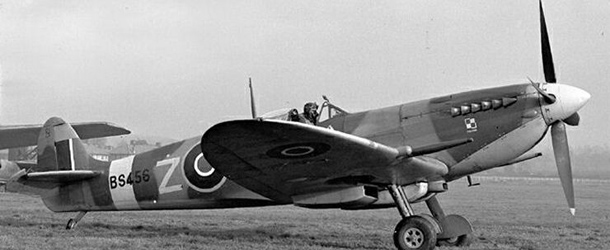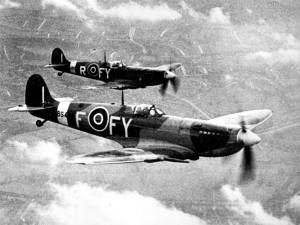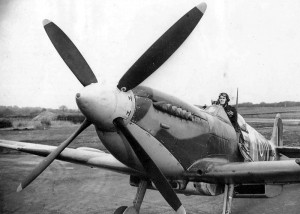The Spitfire Mk.IX was a late war variant of the legendary British Supermarine Spitfire fighter. Developed prior to the World War II, in 1938, the Spitfire became the backbone of RAF fighter command after the Battle of Britain (July-October 1940), and was produced, in several variants, in greater numbers than any other British aircraft. In 1942, the latest Spitfire Mk VB was outclassed by the Focke-Wulf FW 190, and the Mk.IX was designed to counter the new German fighter.
By the time, the Mk.VIII was already developed to succeed the Mk.V, but it involved a significant redesign of the basic Spitfire and would take too long to produce in the numbers required. The Mk.IX was the stopgap solution. It used the same two-stage supercharged Merlin 61 engine intended for the Mk VIII, but in a slightly modified Mark VC fuselage, allowing rapid development and production.
The Spitfire Mk.IX prototype successfully flew in early 1942 and was ordered into production right away. The first Mk.IX, a modified VC AB505, flew in April 1942, and its performance was reported as “outstandingly better than the Spitfire V especially at heights above 20,000 feet. On the level the Spitfire is considerably faster and climb is exceptionally good. Its maneuverability is as good as a Spitfire V up to 30,000 feet and above is very much better. At 38,000 feet it is capable of a true speed of 368mph and is still able to maneuver well for fighting.”
In July 1942 the Spitfire Mk.IX started to be delivered. Although the Mk.IX's airframe did not have the aerodynamic and strength improvements, or the modified control surfaces of the Mk.VII and VIII, it still proved to be an effective counter to the Focke Wulf Fw 190. It had a top speed of 409 mph at 28,000 feet, an increase of 40 miles per hour. Its service ceiling rose from 36,200 feet to 43,000 feet. It could climb at 4,000 feet per minute. The first combat success came on 30 July 1942, when a Spitfire Mk.IX shot down a FW 190.
There were three main versions of the Mk IX. The standard F.IX used the Merlin 61, and was the only version produced until early 1943, when it was phased out in favor of the LF Mk.IX, powered with Merlin 63 and 63A engines. This version offered its best performance at slightly lower altitudes and was the most numerous version of the Mk.IX, with 4,010 units produced. In the spring 1944, the HF.Mk.IXs entered service with the Merlin 70 engine, which improved performance at high altitude.
The majority of Mk.IXs of all types used the standard “c” wing, which could carry four 20mm cannon or two 20mm cannon and four .303in machine guns. In 1944, some were built with the “e” wing, which replaced the four .303in machine guns with two .50in heavy machine guns.
Over 90 Royal Air Force (RAF) and Commonwealth squadrons were equipped with the Spitfire Mk.IX - Australia, Britain, Canada, New Zealand, South Africa, Soviet Union, and the United States used the Spitfire Mk.IX. The aircraft designed to be a stopgap solution proved to be efficient and allowed the RAF to go back on the offensive in occupied Europe. It was produced in greater numbers than any other type of Spitfire – about 6,000 aircraft. The Mk IX remained in service until the end of the war, even after the appearance of the Griffon powered Mk XIV.
Information sources: History of War, Ace Pilots, Military Factory, Warbird Alley, WWII Vehicles, Wikipedia, WWII Aircraft Performance.












Follow Us on